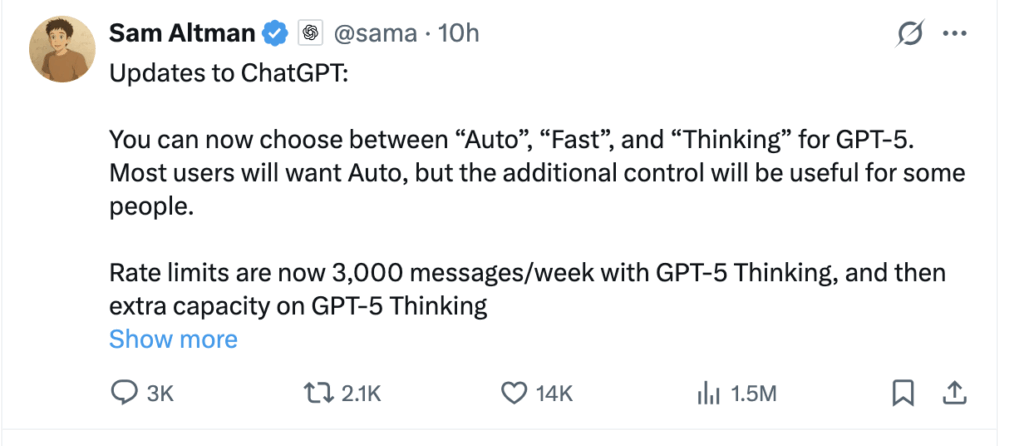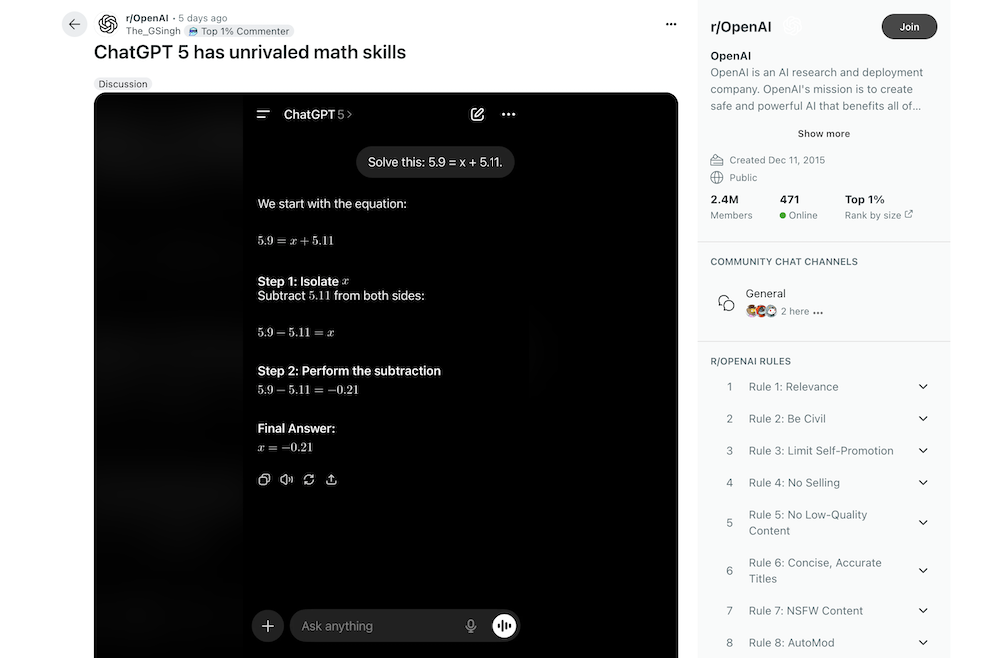Last week, OpenAI presented GPT-5 as a means of simplifying and improving ChatGPT. The idea was to have one model that could handle everything, with a built-in “router” deciding the best way to respond to each question. This, they hoped, would replace the messy model-picking menu—a feature CEO Sam Altman has openly said he dislikes.
But just days later, it’s clear GPT-5 hasn’t lived up to that dream.
On Tuesday, Altman announced on X that GPT-5 now comes with three selectable modes: Auto, Fast, and Thinking. Auto is essentially the router that was supposed to replace manual choices, but the other two modes let users bypass it altogether.

In addition, paying customers can once again access several older models—GPT-4o, GPT-4.1, and o3—which had been retired only a week earlier. GPT-4o is back in the default menu, and others can be enabled in settings.
Altman also revealed that the GPT-5 personality will be tweaked to feel “warmer” than it does now, but “not as annoying” as GPT-4o could be for some people. One key takeaway, he said, is the need for far more customization so each user can adjust the model’s personality to their own liking.
Despite these changes, the model picker is still packed with options—so much for simplification. Expectations for GPT-5 were sky-high, with many hoping for a leap forward like the one from GPT-3.5 to GPT-4. Instead, the rollout has been bumpy.
While a user, The_GSingh on Reddit, was wowed by the incredible ability of GPT-5 to solve mathematical problems, declaring it as unrivalled.

However, the removal of older models last week triggered a backlash from users who had grown attached to their unique styles and quirks—something OpenAI hadn’t fully anticipated. Altman promised that in the future, if a model like GPT-4o is ever retired again, users will get plenty of warning.
Compounding the problem, GPT-5’s routing system stumbled right out of the gate. Some users felt it was slower or less capable than previous models, prompting Altman to address the issue in a Reddit AMA. While improvements have been made, many still aren’t convinced the router works as intended.
As OpenAI’s VP of ChatGPT, Nick Turley, put it: “We’re not always going to get everything on try #1, but I am very proud of how quickly the team can iterate.”
Routing is no small feat. The system has to instantly match a user’s question to the right model—balancing speed, accuracy, and personal preference—without slowing down the experience.
But speed isn’t the only factor users care about. Some prefer detailed, wordy answers, others like concise responses, and a few enjoy more unconventional or challenging perspectives. These attachments can run surprisingly deep—just look at the crowd in San Francisco that held an actual “funeral” for Anthropic’s Claude 3.5 Sonnet after it was shut down.
In the end, GPT-5’s rocky launch has highlighted a bigger truth: people form real connections with AI models, and swapping them out isn’t as simple as replacing a piece of code. If OpenAI truly wants to unify the ChatGPT experience, it may have to lean less on “one-size-fits-all” and more on letting each user shape the AI to feel uniquely theirs.
Macadano...giving you the latest updates in the world of technology.